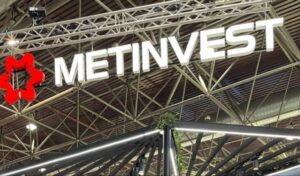
Low-cost airline Wizz Air has officially resumed operations at Suceava “Ștefan cel Mare” International Airport in north-eastern Romania, which is the closest international airport to Ukraine.
According to the airline’s statement, two Airbus A321neo aircraft are based in Suceava, and more than 130,000 seats have been added for the 2025/26 winter season. Starting this week, Wizz Air is launching seven new routes from Suceava to Bologna, Milan-Bergamo, Venice, Karlsruhe/Baden-Baden, Birmingham, Larnaca and Brussels-Charleroi, and from January 2026, it will increase the frequency of flights to Dortmund to four times a week.
With the new destinations, Wizz Air now offers 13 routes from Suceava to six European countries – in addition to the cities mentioned above, there are flights to Vienna, Rome, London, Memmingen and Milan Malpensa.
The airline positions Suceava as the closest international airport for Ukrainian passengers: the airport is located near the border, and there are numerous bus services from Chernivtsi, with the journey usually taking 2-3 hours, sometimes up to 1.5 hours with minimal queues at the Porubne-Siret checkpoint. Ticket prices start at around 400 UAH.
According to industry experts, the development of the base in Suceava expands the range of cheap flights to EU countries for Ukrainian residents while Ukrainian airports remain closed to regular flights due to the full-scale war.

The total area of residential buildings for which construction permits (new construction) were issued in January-September 2025 increased by 48.4% compared to the same period in 2024, reaching 4 million 396.7 thousand square meters, according to the State Statistics Service (Gosstat).
According to the statistics agency, in January-September 2025, the total area of new construction of apartment buildings increased by 51.1% compared to last year, to 4.23 million square meters. The number of apartments in apartment buildings declared at the start of construction increased by 54.1% to 47,600.
Most of the new housing in the first nine months was registered in the Kyiv region: the total area of new housing construction amounted to 2 million 305.1 thousand square meters (21.2 thousand apartments), which is 142% more than in the first half of last year.
Significant volumes of new housing in the specified period were also registered in the Lviv region – 816,500 square meters (10,900 apartments), which is 63.6% more than in January-September 2024, as well as in Ivano-Frankivsk – 344,200 square meters (+8.2%, 5,500 apartments), Zakarpattia region – 368.7 thousand square meters (+26.1%, 4.7 thousand apartments), Poltava region – 160.3 thousand square meters (2.1 thousand apartments), Vinnytsia region – 167,100 square meters (-29.2%, 3,900 apartments) and Volyn region – 176,300 square meters (+25.3%, 4,000 apartments).
In Kyiv, in January-September 2025, the total area of new construction of housing amounted to 449,600 square meters (5,200 apartments), which is 36% more than last year.
The State Statistics Service reminds that the figures do not include territories temporarily occupied by the Russian Federation and parts of territories where hostilities are ongoing (or have been ongoing).
As reported, the total area of new housing construction in Ukraine in 2024 decreased by 7.2% compared to 2023, to 3.9 million square meters, while in 2023 it was 4.2 million square meters, in 2022 – 6.67 million square meters, and 12.7 million square meters in 2021.

On December 11, 2025, the UKRAINIAN SPECIAL BUILDING AWARDS IBUILD 2025 ceremony, organized by the Confederation of Builders of Ukraine, took place at the Hilton Kyiv Hotel. The event brought together leading representatives of the construction industry, developers, investors, architects, government officials and the professional community.
The ceremony honored projects that set new standards for modern residential construction, combine the quality of architectural solutions, functionality, comfort of living, and a responsible approach to implementation in wartime.
Lesniy Kvartal, 16, received the award for Residential Complex of the Year 2025.
The project is being implemented by MTDK Stroitelne Misto LLC and is an example of a balanced approach to residential development focused on the needs of modern residents and long-term value for the urban environment.
House 16 in the Lesniy Kvartal residential complex is distinguished by well-thought-out planning solutions, modern architecture, integration into the natural environment and attention to the quality of construction at all stages of implementation. The project demonstrates that even in a difficult period for the country, Ukrainian developers and builders continue to create housing that meets high professional and consumer standards.
Receiving the Residential Complex of the Year 2025 award was a recognition of the work of the team of MTDC Budivelne Misto LLC, as well as a confirmation of the project’s relevance and competitiveness in the Ukrainian residential real estate market.
Alliance Novobud is a Ukrainian development company that has been operating in the residential and commercial real estate market for over 18 years. It was founded in the mid-2000s. Its core business is the construction of multi-storey residential complexes of comfort and business class, as well as related social and commercial infrastructure.
The company is one of the top 20 developers in Kyiv and Kyiv region in terms of the number of commissioned housing (according to the specialized portals Anbud and LUN). The total volume of completed projects is estimated at more than 800 thousand square meters of housing. Another 300 thousand square meters are under construction and preparation.
Alliance Novobud positions itself as a developer focused on quality and meeting deadlines. The company regularly publishes reports on construction dynamics, which increases the level of transparency and trust.
In the period of 2022-2025, despite the war and economic difficulties, the company continued active construction, which makes it stand out among its competitors.
The company’s strategy envisages the development of mixed residential neighborhoods with the integration of schools, kindergartens, retail space and recreational areas.
alliance_novobud, ukrainian_special_building_awards_ibuild_2025

On December 11, 2025, the Hilton Kyiv Hotel hosted the UKRAINIAN SPECIAL BUILDING AWARDS IBUILD 2025 charity evening organized by the Confederation of Builders of Ukraine.
The event brought together more than 250 guests – representatives of government, business, construction industry leaders, as well as Ukrainian and international companies and funds.
The ceremony honored companies that demonstrate resilience, responsibility and professionalism even in the face of a full-scale war, continue to implement projects, adapt to the challenges of the times and contribute to the restoration of Ukraine.
Alliance Novobud received the Developer of the Year 2025 award, confirming this status for the fourth time in a row.
This award is another confirmation of the company’s systematic work, stability of business processes, and responsible approach to the development of residential projects that shape the modern urban environment.
This award is of particular importance to our company. It testifies not only to the architectural or investment component of the projects, but also to transparency, legal reliability, and responsibility to investors and partners. To be recognized as the Developer of the Year for the fourth time in a row is a high appreciation of the daily work of the entire Alliance Novobud team and at the same time a great responsibility that we recognize,” commented Anna Bogush, Director of the Legal Department of Alliance Novobud.
Alliance Novobud continues to implement residential projects in accordance with modern standards of quality, safety and legality, strengthening market confidence and contributing to the sustainable development of Ukrainian cities.
Alliance Novobud is a Ukrainian development company that has been operating in the residential and commercial real estate market for over 18 years. It was founded in the mid-2000s. Its core business is the construction of multi-storey residential complexes of comfort and business class, as well as related social and commercial infrastructure.
The company is one of the top 20 developers in Kyiv and Kyiv region in terms of the number of commissioned housing (according to the specialized portals Anbud and LUN). The total volume of completed projects is estimated at more than 800 thousand square meters of housing. Another 300 thousand square meters are under construction and preparation.
Alliance Novobud positions itself as a developer focused on quality and meeting deadlines. The company regularly publishes reports on construction dynamics, which increases the level of transparency and trust.
In the period of 2022-2025, despite the war and economic difficulties, the company continued active construction, which makes it stand out among its competitors.
The company’s strategy envisages the development of mixed residential neighborhoods with the integration of schools, kindergartens, retail space and recreational areas.
alliance_novobud, developer_of_the_year_2025, ukrainian_special_building_awards_ibuild_2025

The National Commission on Securities and Stock Market (NSCM) has registered the report on the results of the debut issue of bonds (series A) for 60 million UAH LLC “FC ”Finvin” (Kiev), which belongs to brothers Alexander and Andrei Shpigov.
As stated in the decision of the SEC of December 12, 2025, it is an issue of registered corporate bonds without making a public offering. The nominal value of the bond is UAH 1 thousand, information on other parameters of the issue is not yet available.
According to the information on the website, Finvin FC provides financial leasing and lending services for business, was established in 2019, the authorized capital is UAH 20.1 million.
According to the results of three quarters of 2025, the company received 5.03 million UAH of net profit, which is almost 4 times more compared to the same period of 2024 (1.32 million UAH). Its revenue for the first 9 months of this year amounted to UAH 472.2 mln, while in the same period last year there was none.
In January-September this year, the company received UAH 30m of additional capital, which increased its equity to UAH 55.93m.
According to the National Bank, the owners of FC Finvin are brothers Alexander Shpig and Andrey Shpig, who own 44% each. Another 10% belongs to the closed non-diversified venture capital unit investment fund Leasingfuche, the assets of which are managed by AMC Brightfuche Asset Management LLC, the ultimate beneficiaries of which are also brothers Shpig, and 2% of the company belongs to Alexander Naumenko.
The Shpiga brothers are heirs of the former owner of Aval Bank Fyodor Shpiga and co-owners of several significant assets, including the capital’s River Mol and entertainment center Blockbuster, and the holding company Dairy Alliance.

Metinvest Mining and Metallurgical Group has acquired Tubular Products Iasi S.A. (AMTP Iasi), a pipe plant in Romania controlled by ArcelorMittal S.A. (Luxembourg), from ArcelorMittal. According to information released by the company on Wednesday, the group continues to promote synergy between the metallurgical industries of Ukraine and the EU.
It is specified that on December 16, Metinvest closed a deal to acquire ArcelorMittal Tubular Products Iași, located in the Romanian city of Iași.
The plant produces welded structural pipes for construction, mechanical engineering, infrastructure, and the agricultural sector. Its maximum capacity is 240,000 tons of products per year.
“Even before the war, Metinvest began building bridges between the metallurgical industries of Ukraine and the EU. Therefore, the new plant is a unique opportunity for us to keep two enterprises busy at once – in Iași and Zaporizhia. This is part of our contribution to post-war recovery. I am confident that the plant’s products will be in demand not only in the EU, but also in the restoration of Ukraine’s infrastructure and industry damaged by the war,” commented Yuriy Ryzhenkov, CEO of Metinvest, on the completion of the deal.
The enterprise became Metinvest’s first production site in Romania. Negotiations on the acquisition of the plant lasted several months. On November 24, 2025, the group received approval from the European Commission to acquire the asset under the European Union Merger Regulation, and the next day, approval from Romania’s national competition authority following a foreign investment screening procedure.
Metinvest’s enterprises in Ukraine have historically produced large volumes of hot-rolled coils for both the domestic market and export. The location of the asset in Romania, just 600 km from Zaporizhia, allows us to supply up to 180,000 tons of hot-rolled coils produced by Zaporizhstal annually. This will provide the Romanian plant with regular orders and stable operation,” said Metinvest’s Chief Operating Officer Alexander Mironenko.
It is also reported that in 2026, the asset is planned to be integrated into Metinvest’s production and organizational chains. The plant has five pipe mills, two longitudinal cutting lines, and two coating lines. Metinvest will comply with all the terms of the employment contracts with the employees of the enterprise in Iasi.
It should be noted that, in addition to Ukraine and Romania, the group has assets in Italy, Bulgaria, the UK, and the US.
AMTP Iasi is registered in Romania and is actively involved in the production and supply of small welded carbon steel pipes.
Metinvest is a vertically integrated group of mining and metallurgical enterprises. Its enterprises are located in Ukraine – in the Donetsk, Luhansk, Zaporizhzhia, and Dnipropetrovsk regions – as well as in the European Union, the United Kingdom, and the United States. The main shareholders of the holding are SCM Group (71.24%) and Smart Holding (23.76%). Metinvest Holding LLC is the management company of the Metinvest Group.